
Simpson Sprints To All-Time Mark In 1929
George Simpson of Ohio State was ahead of his time.
In 1929, Simpson used starting blocks – then a recent innovation – in the final of the 100 yards at the NCAA Track & Field Championships. To wit, the starting blocks hadn’t be around all that long, as the invention was credited to Australian Charlie Booth and his father earlier that year.
Simpson, then a junior for the Buckeyes, scorched the cinder in 9.4 seconds to not only win one of his three career NCAA titles, but set an apparent world record in the process. And while the NCAA allowed the use of starting blocks, the world and U.S. governing bodies did not at the time. Therefore, his 9.4 was never ratified as a world record (It was eventually recognized as the American record 15 years later in 1944).
The final field of the 100 yards was loaded, featuring four men who had equaled the existing world record of 9.5. The others, in order of finish: defending champ Claude Bracey of Rice, Eddie Tolan of Michigan and Cy Leland of TCU. Tolan and Simpson, in fact, equaled the 9.5 WR in prelims.
Simpson was a double winner in 1929, adding a 220-yard victory to help lead Ohio State to its first (and still only) team title at this meet. The Buckeyes won the meet with just four athletes – the smallest winning team until USC (1943) and Arkansas (1996) would match them. Amazingly, Ohio State could have won with just three athletes as the trio of Simpson (20 points), hurdler Richard Rockaway (18) and discus thrower Pete Rasmus (10) accounted for 48 of the Buckeyes’ 50 points (Runner-up Washington had 42).
The NCAA and collegiate track & field will mark a momentous milestone in the spring of 2021 -- the 100th anniversary of the NCAA Championships and with that, the NCAA Track & Field Championships. In June 1921, the University of Chicago hosted the first track & field championships in NCAA history.
This point can’t be emphasized enough: Not only was the event the first for NCAA track & field, but the first championships for any sport under the sponsorship of the NCAA.
To celebrate, over each of the next 365 days, the U.S. Track & Field and Cross Country Coaches Association (USTFCCCA) will celebrate moments, student-athletes, and coaches that have made a century’s worth of championships special. From humble beginnings to important historical milestones to the modern-day, collegiate track & field has evolved with the American society.
The 2021 edition of the NCAA Division I Outdoor Track & Field Championships begin with preliminary round action on May 27-29 in Jacksonville, Fla., and College Station, Texas. The championships final site and culmination of the celebration is slated for June 9-12, 2021 at the newly rebuilt Hayward Field in Eugene, Ore.
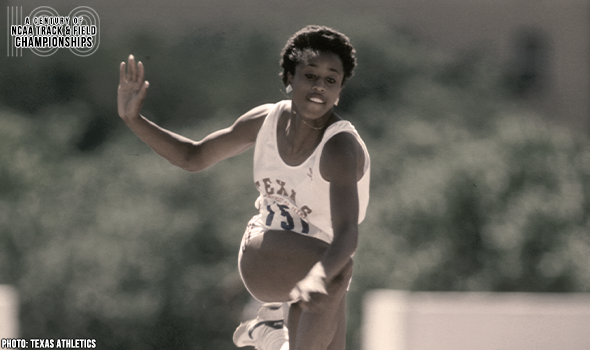
Texas’ Turner Soared To Triple Jump Greatness
Terri Turner was a two-time TJ champion at the NCAA DI Outdoor T&F Championships. When Turner won her 2nd title in 1986, she set an all-time world best of 13.66m (44-9¾).
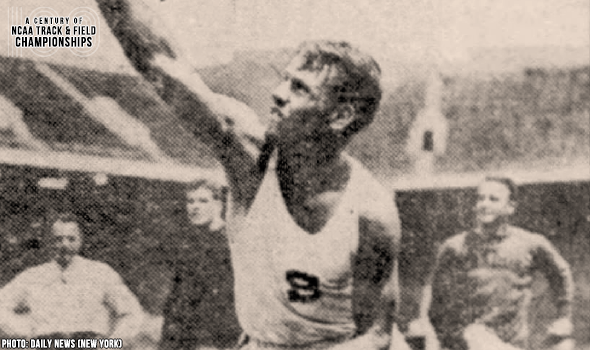
Stanford’s Rothert Starred In The Shot Put
Harlow Rothert won three consecutive shot put titles at the NCAA Outdoor T&F Championships between 1928 & 1930. He set meet records in both 1929 and 1930.

Indiana’s Kharun Set Javelin MR In 2003
Irina Kharun won the javelin title at the 2003 NCAA DI Outdoor T&F Championships with a meet record heave of 61.82m (202-10). It also helped her win by more than 30 feet!
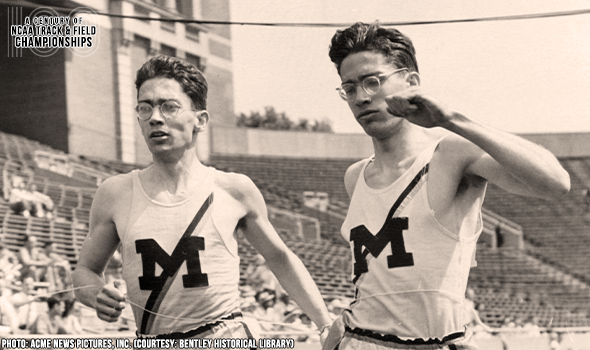
Hume Brothers Had Officials Seeing Double
Twins Robert & Ross Hume purposefully tied for the mile crown at the 1944 NCAA Outdoor Track & Field Championships. They tried again in 1945, but officials gave Ross the win.
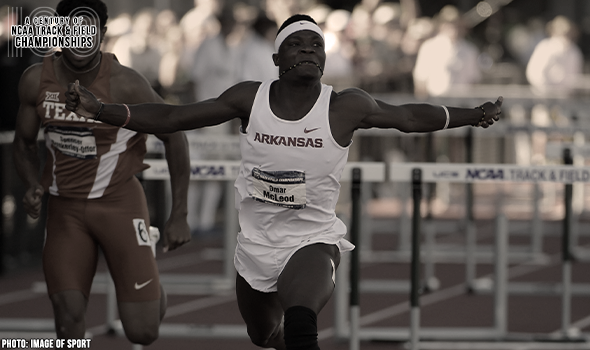
Woo Pig Sooie! McLeod Sizzled Track In 2015!
Omar McLeod clocked a sizzling 13.01 (+3.9) to win the 110HH at the 2015 NCAA DI Outdoor T&F Championships. Only one man had ever gone faster in meet history at the time.

Felicien Starred In The 100H At NCAAs
Perdita Felicien won back-to-back 100H titles at the NCAA Division I Outdoor T&F Championships in 2002 & 2003. She set a MR of 12.68 in the semifinals on the way to title No. 2.

Truly “Unbroken,” Zamperini Shined At NCAAs
Louis Zamperini set a meet record in the mile of 4:08.3 at the 1938 NCAA Outdoor T&F Championships. Zamperini, who also won the mile in 1939, saw his record last 15 years.

Hughes Soared To Three Consecutive HJ Titles
Tanya Hughes was the first woman to win three high jump titles at the NCAA Division I Outdoor T&F Championships. Hughes did so consecutively in 1991, 1992 & 1993.
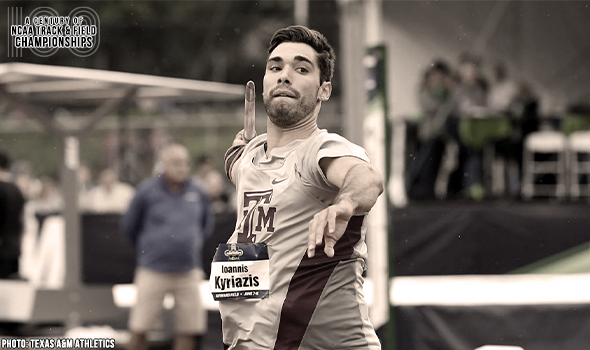
Kyriazis Made Point With Javelin In 2017
Ioannis Kyriazis set a meet record in the javelin of 82.58m (270-11) and won by more than 19 feet at the 2017 NCAA DI Outdoor T&F Championships.
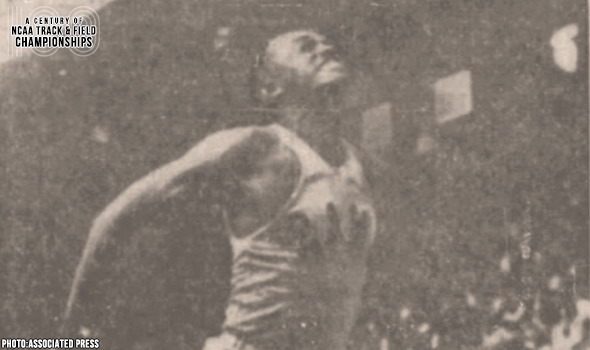
Sharpe Bounded To Meet History In 1956
Bill Sharpe became the first man to eclipse the 50-foot barrier in the triple jump at the NCAA DI Outdoor T&F Championships in 1956. Sharpe won with his 15.36m (50‑4¾) effort.

